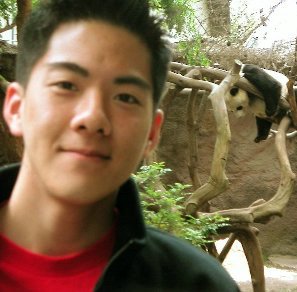what's most importantly
the neuromuscular junction is just that: the junction between a nerve ending and a muscle fiber. let's say this particular nerve originates in the brain, and the target muscle fiber is an abdominal muscle. now, let's also say you're sitting in your room, listening to kanye west's new workout plan, and you decide hey, i should do some crunches. you lie down, and a split-second before you crunch, the following happens (very roughly speaking):
first, your brain sends an electrical signal--an action potential--down the length of the nerve towards the neuromuscular junction. the action potential doesn't move uninterrupted along the nerve like an ocean wave, however. instead, it's more like a relay race runner, moving a short distance before initiating a consequent, identical action potential, which then does the same. another way to think of the action potential is as the baton in a relay race. either way, this relay race of action potentials eventually hits the nerve ending, aka the nerve terminal, where the key electrochemical process begins.
one of the more remarkable aspects of cell physiology is the conversion of electrical to chemical energy, and vice versa. in the case of the neuromuscular junction, the action potential causes voltage-gated (i.e. voltage-sensitive) calcium channels to open up. calcium then rushes into the nerve terminal, dramatically changing the ionic milieu of the cytoplasm (each calcium ion carries a 2+ charge). this results in the fusion of tiny vesicles to the plasma membrane, each one containing a certain quantal amount of acetylcholine (ACh), a neurotransmitter. a graphic but effective way of visualizing this release of ACh is to imagine each vesicle as a free-floating uterus containing a baby named ACh. upon depolarization by the action potential, these vesicles move to the nerve terminal and "give birth," releasing the ACh baby to the extracellular world. ok bad metaphor, but it's friday night and i'm about to head out.
anyway, the ACh then moves across the space between the nerve terminal and the muscle fiber--the synaptic cleft--until it reaches the receptors for ACh, called nicotinic receptors (named for their specific reponse to death. i mean cigarettes. i mean nicotine). these receptors are special for all kinds of reasons that i won't get into here. suffice it to say, what's most importantly is that ACh is the indispensable errand boy of all voluntary muscular contractions. botox, for example, blocks the release of ACh, preventing muscle stimulus and thereby also preventing all the muscle activity that leads to wrinkles and such. but, with the appropriate transduction ACh, you can happily do your crunches and eventually score an nba player like kanye says.


0 Comments:
Post a Comment
<< Home